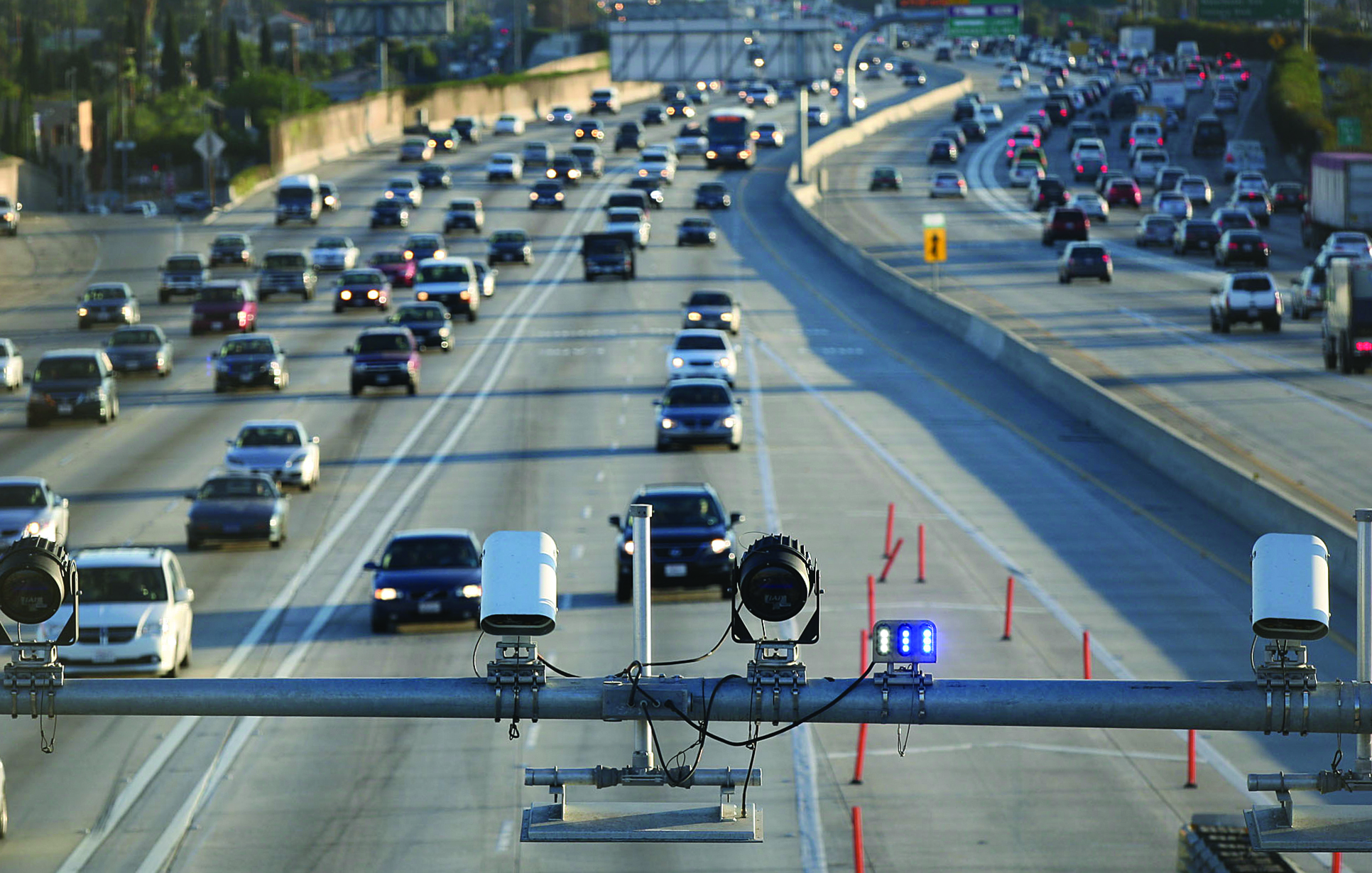Efforts to alleviate congestion for L.A. commuters, including UCLA students, made an 11-mile stride when Los Angeles County recently opened its first toll lane on the 110 Freeway.
Earlier this month, Metro converted the two designated carpool lanes to high-occupancy toll lanes on the 11-mile stretch of the 110 Freeway extending from Downtown Los Angeles to the South Bay, said Anna Chen, a Metro spokeswoman. An additional 14-mile toll lane, stretching from Union Station to the 605 Freeway, will open on the 10 Freeway early next year, Chen said. Now, solo riders can opt to use the faster moving lanes by paying a toll, she said. Carpools ”“ Âcars with two or more people ““ can continue to use the lanes for free, Chen said.
The cost of using the lanes increases as the lane becomes more congested, Chen said. Electronic signs display the current fee, which can range from 25 cents to $1.40 per mile, to enter the express lanes, she added.
Anyone wishing to use the new toll lanes will need a FasTrak transponder, a device placed in cars that will collect the tolls electronically, Chen said. Carpools must indicate the number of riders in their vehicle on the switchable transponder devices, she added. So far, student carpool groups at UCLA, such as Zimride or Vanpool, have experienced a smooth transition to the new toll lanes after obtaining the new transponders, said Penny Menton, senior associate director of events and transportation for UCLA.
Initial deposits to open a FasTrak account range from $40, if you pay with credit or debit, to $75, if you pay in cash. Users who pay $75 receive $25 back from their initial deposit when they terminate their account, according to the Metro ExpressLanes website.
“Since measurements began in the 1980s, Los Angeles has consistently demonstrated the worst congestion,” said Donald Shoup, an urban planning professor at UCLA, He said he was surprised it took so long for Los Angeles to implement them.
Similar toll lanes have been fairly successful in other counties, such as State Route 91 in Orange County, Shoup added.
David Karwaski, planning and policy manager for UCLA Transportation, said he estimates about 750 students, faculty and staff members use the 110 Freeway to commute to campus. About 3,000 to 5,000 UCLA commuters live near the 10 Freeway and may have access to the toll lanes when they open on the freeway, Karwaski said.
Frustrated by the dense traffic on the 110 and 10 freeways, commuting student Katie Brown found an alternate route to avoid the often 80-minute hassle.
The third-year linguistics student said she doubts drivers will take advantage of the new toll lanes because the lanes seem to be underutilized.
“The carpool lane is good, but mostly empty,” Brown said.
Shoup said he believes that though L.A. drivers may express doubt about the toll at first, they will begin to recognize its necessity as they familiarize themselves with the lanes.
“What seems unthinkable for one generation can become indispensable for the next generation,” Shoup said.
Metro representatives said they hope to help the lanes reach full capacity by attracting more drivers with the tolls, which may alleviate Brown’s concerns.
While the lanes may currently impact a limited portion of the UCLA community, Shoup said similar toll lanes may be expanded to other L.A. County freeways.
“If a similar lane were put between campus and the Valley, I would use it regularly,” said Aidan Steele, a fourth-year English student who commutes on the 405 Freeway.
“If you are in a real hurry, you have the option to pay on a special day, say you have an exam or are late for class,” Shoup said.
Anthony Perez, a third-year chemistry student, currently commutes to UCLA on the 10 Freeway at 4 a.m. every day. Perez said he probably will not use the new toll lanes opening on the 10 Freeway early next year because of the cost.
“Anything more expensive is more inconvenient,” Perez said.
Karwaski said some people assume congestion pricing favors wealthier people, but toll lanes actually benefit everyone. As drivers enter the toll lanes, they disperse traffic overall, shortening the commute for drivers like Perez, who choose to remain in the regular lanes.
The toll lanes are a demonstration project, Chen said. After one year, Metro officials will decide whether to make the toll lanes permanent.
